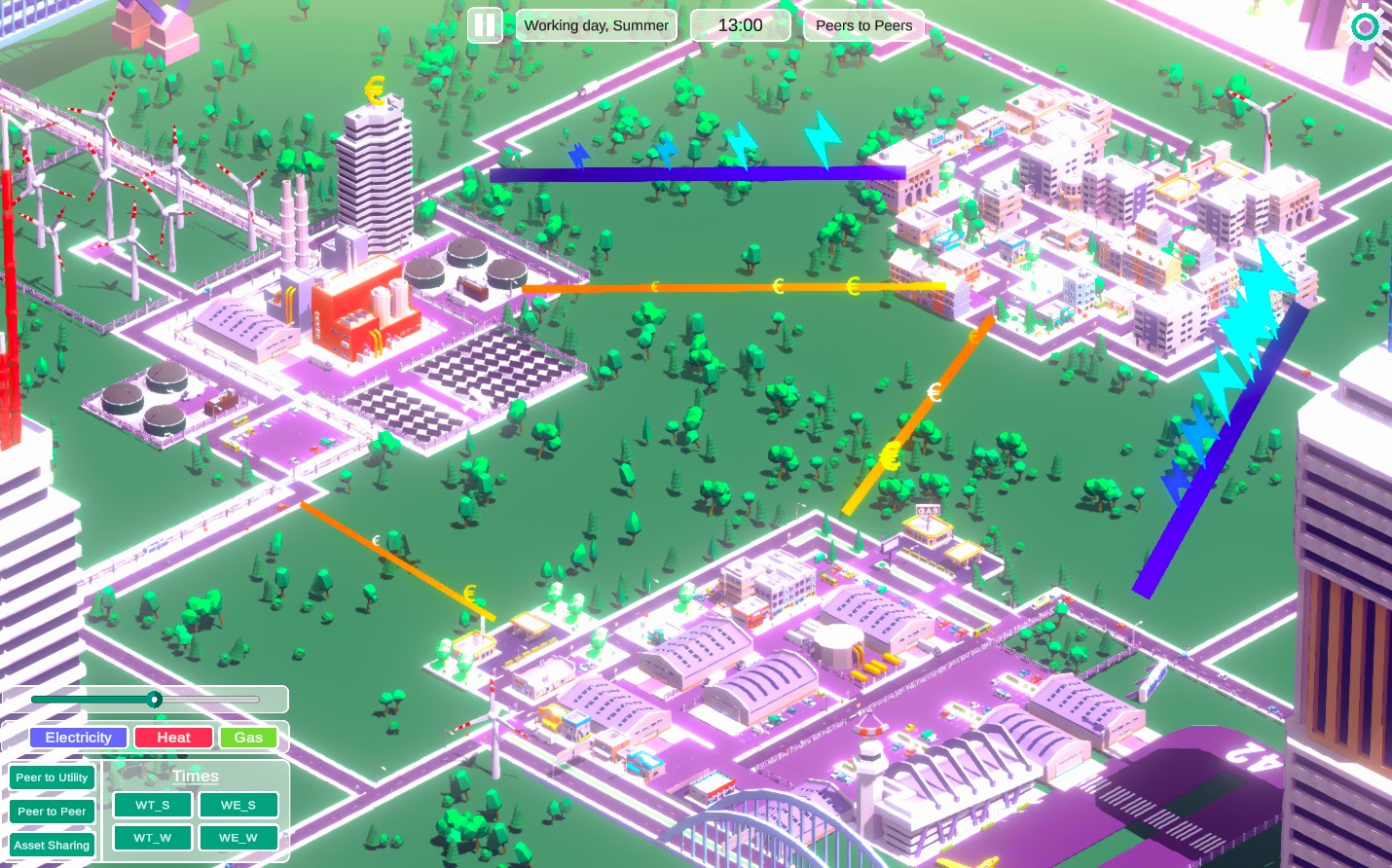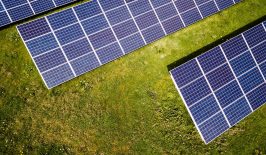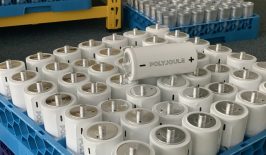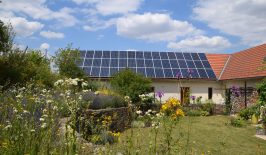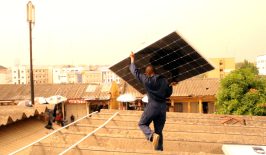Much has been written – both at RESET and elsewhere – about the intermittent nature of some renewable energies and the challenge that poses. Simply put, renewable sources such as wind and solar do not produce a consistent amount of electricity over even relatively short periods of time. In some instances they may not produce enough, in others perhaps they generate too much. One solution to this issue is to develop renewable energy storage systems which can store that surplus power until it is needed – but there are also other ways to tackle this problem.
Peer-to-peer trading concerns networking smaller, decentralised “cells” into a grid in which renewable energy can be traded between them. If one cell is producing too much power, then this can be easily and conveniently sold to another cell which is not producing enough. A connection to an outside grid is still advisable in case there is an overall drop in production, but the idea is that energy can be moved between smaller producers to ensure no power goes to waste. The trading will also often be at a lower price than provided by the general electricity provider.
Fundamentally, this breaks the old system of having producers and consumers. Peer-to-peer trading will likely benefit most when decentralised renewable power plants become more widespread and prevalent. These can be residential or commercial, and experts suggest the most effective peer-to-peer trading networks will be those which feature a combination of different sectors.
For example, a 2020 study carried out by the Fraunhofer Institute in Germany examined a peer-to-peer network established between Stuttgart airport and four residential areas. Electricity was produced via photovoltaic panels and smaller combined heat and power plants and transferred between cells as required. The study concluded that a network of commercial and residential cells was most effective as the different sectors had different demands at different times. The team also created a visualisation depicting how the process operated.
Generally speaking, commercial properties require more energy during the day, when stores and offices are open and workers are working. Meanwhile, with many homeowners out at their jobs, residential demand drops. Therefore, the surplus power generated by residential solar panels can be sold to commercial cells. Then as evening arrives, commercial demand drops as businesses close or scale down operations, and residential demand increases as lights, televisions, cookers and heating are turned on. This often occurs just as solar production ends. Now the surplus energy produced by commercial areas can be diverted to residential ones. The study also suggests the benefits can be even greater if the cells are also willing to adjust their demand to the supply. Severin Beucker, co-founder of the Borderstep Institute told RESET:
“That’s a relatively new idea, so to say that consumers don’t just continue to consume more in a linear fashion, but then consume more when there’s more electricity available and less when there’s less electricity being generated. That works in many cases, for example when I want to refuel an electric car or generate hot water in a house. I can link that to some extent to the times of day when more electricity is available via renewables, thereby relieving the grid and the demand for electricity.”
Building a Virtual Control Centre
However, how does this network come about? How is it managed and maintained? That’s where digital technologies come in. Virtual Power Plants (VPP) are an emerging concept within the renewable power sector which aims to assist the development of peer-to-peer trading and decentralised networks.
In essence, the central control room of traditional fossil fuel power plants is replicated through the use of software. In practice, a VPP can consist of many units of a single type of asset – such as batteries – or a mixture of many different types of asset. However, each component part of the network still remains independent and individually owned.The major advantage of VPP software is it allows even small or medium sized renewable energy producers to easily monitor and sell their energy to the grid or the stock market.
Power balancing and demand response – adjusting the amount of power generated in accordance to demand – is also possible via VPP. Previously, this type of operation was also largely limited to large centralised plants. By combining this ability with weather and forecasting information, a VPP can also provide networks the ability to automatically schedule their generation and use in relation to other metrics.
Some VPP developers, such as Germany company Next Kraftwerk, have developed specific hardware to network producers and provide them with a platform for power management and selling. The Next Box, for example, is a remote control unit which networks thousands of assets to the platform, allowing a user to better asses their performance, as well as accessweather forecasting and energy market information.
VPPs can also be tailored towards particular hardware, function or producer. For example, Lumenaza offers a software-as-a-service platform aimed towards developing prosumer communities and supporting them with smart tariffs. These smart tariffs are responsive to market demands and can also be tailored to specific sectors, such as e-mobility or heating.
Sonnen is another Germany-based VPP developer also specialising in a specific sector. They have developed a network of renewable energy batteries which can store energy when there is a surplus. By becoming a member of this network, or installing a Sonnen battery themselves, small scale energy producers do not need to sell their energy at low prices when there is a drop in demand. Instead, they can store their energy on the Sonnen network, where it can the be sold when energy prices are higher. Previously, this kind of ability was largely limited to the big centralised power stations.
In terms of sustainability, VPPs have a role to play in ensuring power generated by renewable energy does not go to waste. This will ideally have a knock on effect in which less power is required from centralised, non-renewable power plants. Additionally, VPP developers suggest their software can greatly improve the financial return for small scale plant operators by optimising the sale of their power on energy markets. If decentralised power plants and peer-to-peer trading can be seen to become increasingly lucrative, it may provide an additional boost to renewable power adoption.
Furthermore, large scale centralised power providers often claim their plants can do things – such as grid stabilisation and addressing peak demands – which smaller decentralised plants cannot. However, VPP technology suggests that with the proper digital tools, networks of smaller plants can also replicate these processes, eroding the usefulness of older, centralised plants.
All of this will hopefully make renewable energy much more attractive to energy producers – boosting the much needed energy transition.

